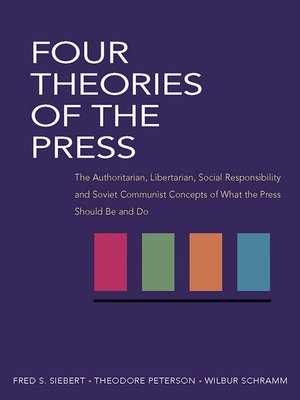Four Theories of the Press
ebook ∣ The Authoritarian, Libertarian, Social Responsibility, and Soviet Communist Concepts of What the Press Should Be and Do
By Fred Siebert

Sign up to save your library
With an OverDrive account, you can save your favorite libraries for at-a-glance information about availability. Find out more about OverDrive accounts.
Find this title in Libby, the library reading app by OverDrive.



Search for a digital library with this title
Title found at these libraries:
| Library Name | Distance |
|---|---|
| Loading... |
Presented here are four major theories behind the functioning of the world's presses: (1) the Authoritarian theory, which developed in the late Renaissance and was based on the idea that truth is the product of a few wise men; (2) the Libertarian theory, which arose from the works of men like Milton, Locke, Mill, and Jefferson and avowed that the search for truth is one of man's natural rights; (3) the Social Responsibility theory of the modern day: equal radio and television time for political candidates, the obligations of the newspaper in a one-paper town, etc.; (4) the Soviet Communist theory, an expanded and more positive version of the old Authoritarian theory.
| Cover Title Page Copyright Page Table of Contents Introduction 1. The Authoritarian Theory 2. The Libertarian Theory 3. The Social Responsibility Theory 4. The Soviet Communist Theory Bibliography | Fred S. Siebert is Director of the School of Journalism and Communications at the University of Illinois. Theodore Peterson is Associate Professor of Journalism and Communications at the University of Illinois. Wilbur Schramm, former Dean of the Communications Division of the University of Illinois, is Professor of Journalism and Communications at Stanford University.






